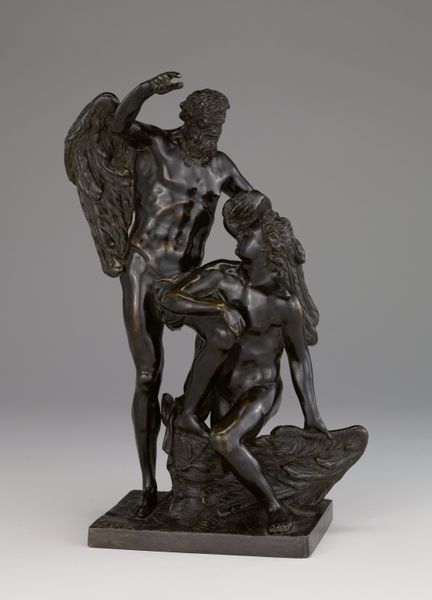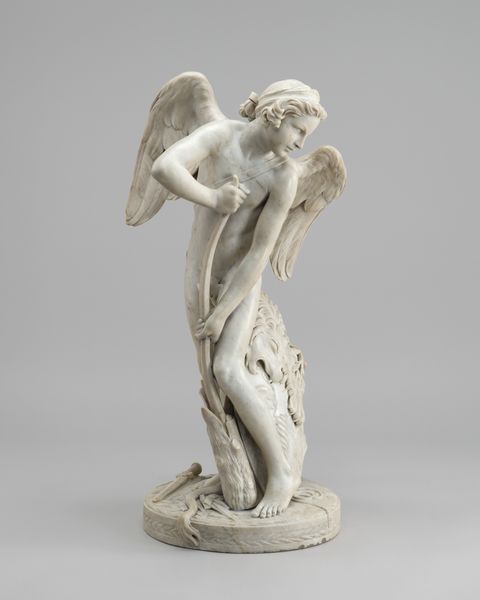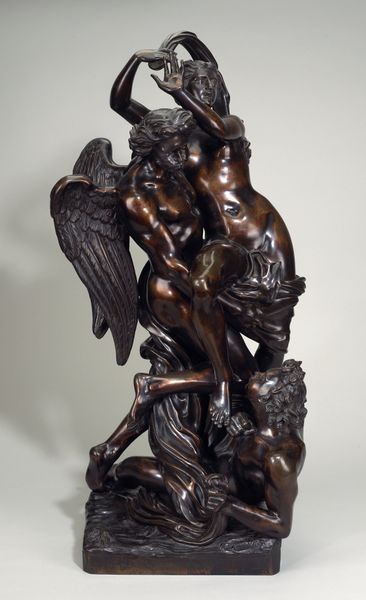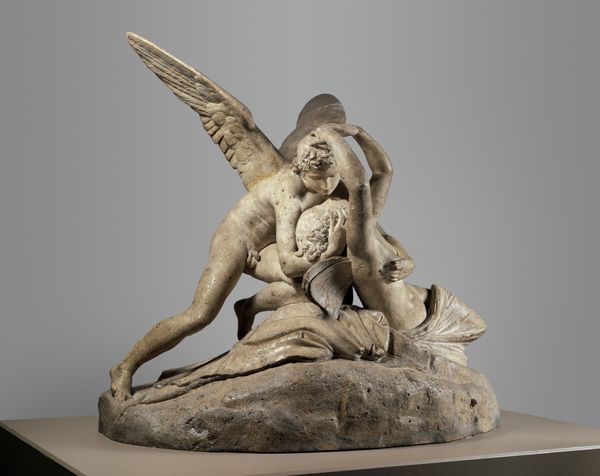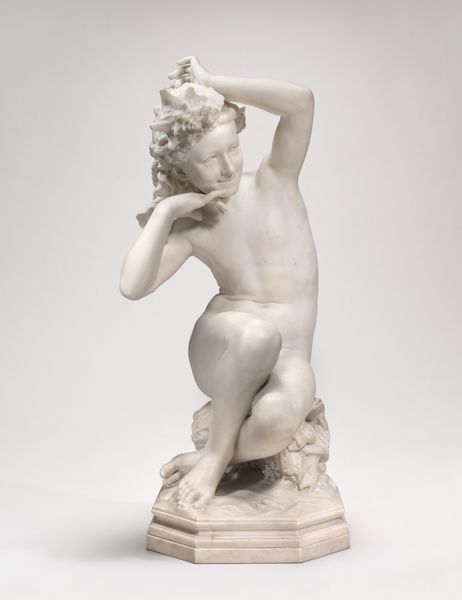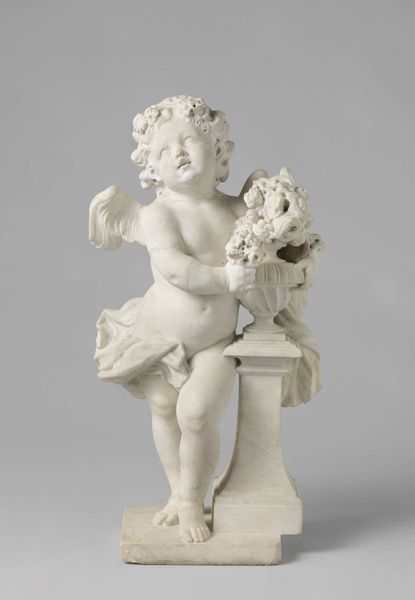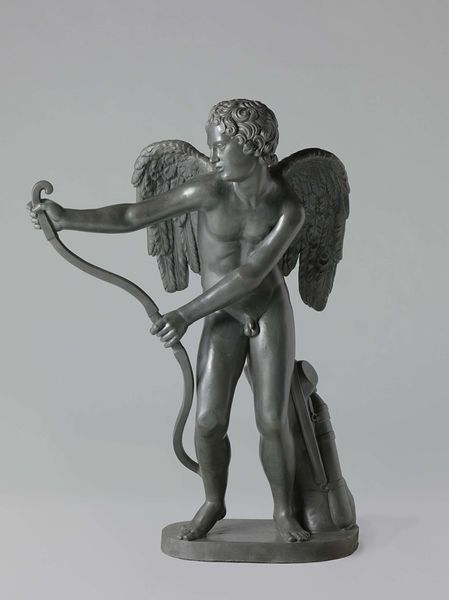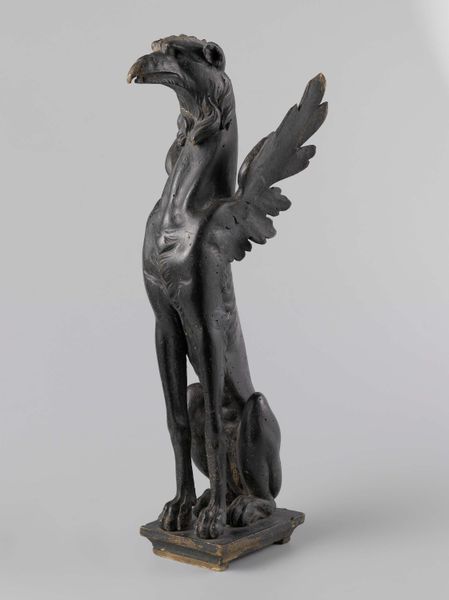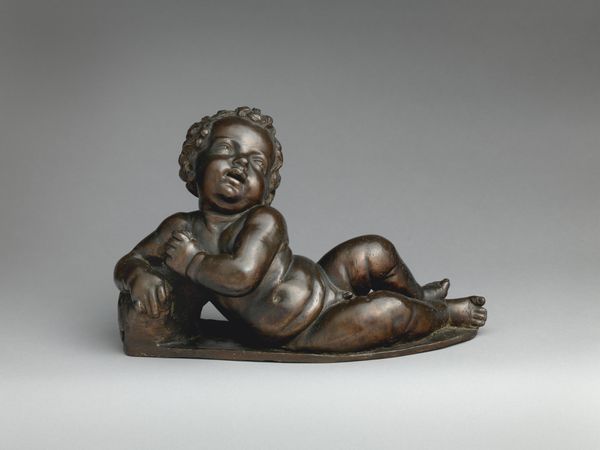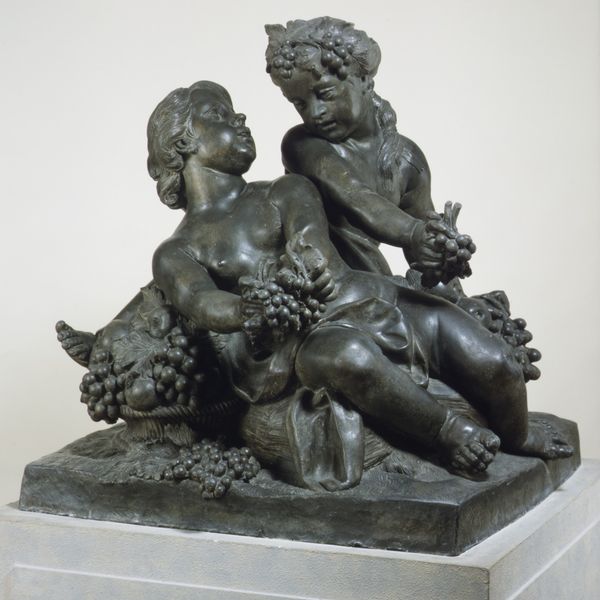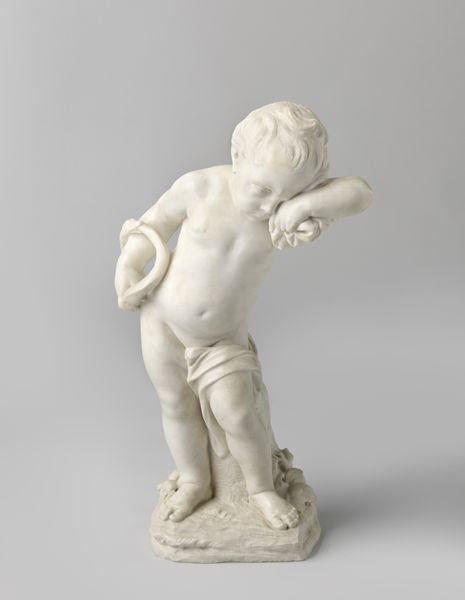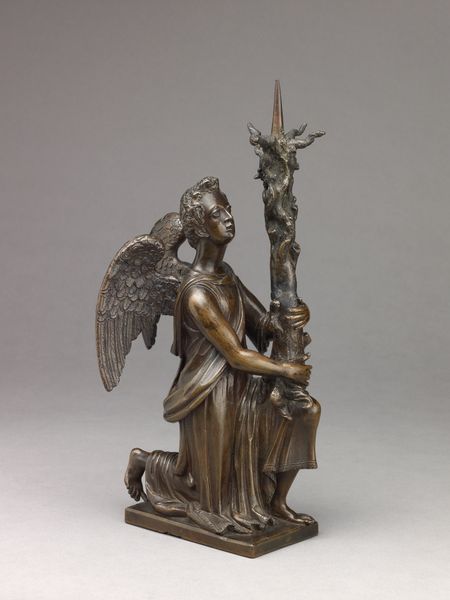
Dimensions: overall: 83.82 × 40.64 × 53.34 cm (33 × 16 × 21 in.)
Copyright: National Gallery of Art: CC0 1.0
Curator: Here we have Etienne-Maurice Falconet's "The Menacing Cupid," a bronze sculpture completed sometime before 1874. Editor: Menacing is right! It’s surprising—Cupid's usually portrayed as this plump, joyful cherub, but here, there’s something calculating in his gaze, a quiet intensity. Is it just me or is he… plotting? Curator: It’s that finger held to his lips, isn't it? The universal gesture for silence. The allegory here is multifaceted: love, with its delights, also has a shadowy, secretive side. Falconet brilliantly captures that duality. What about the material grabs you? Editor: Well, look at the casting. It’s impeccably done, especially in the rendering of Cupid’s musculature and those delicately feathered wings. And think about bronze itself – a mixture of copper and tin. The labour of extracting the ores, smelting them, creating the moulds...all so different from marble carving, say, and how the message of love gets transformed through production choices. Curator: Yes, this feels less about ethereal love and more about tangible forces and deliberate actions, perhaps because of the heaviness and deep colour of the bronze. It really impacts how the wings are percieved. He seems poised, almost holding his breath. Editor: Exactly. I’m also intrigued by the roses near Cupid's feet—also bronze, yet treated to look almost like gold. That choice feels very deliberate, like a comment on the gilding of romantic love or perhaps its manufactured aspect. Curator: Or maybe a reminder of the sweetness and beauty amidst the potentially harmful mischief of love. But this isn't a one-dimensional morality tale. Instead it’s a recognition that human affairs—particularly love—can contain contrasting ideas. What resonates is the ambiguity of intent in that bronze face. Editor: It sure does gives one pause. Art-making processes have this quality, you know? A physical object which demands an internal process, a shift in our viewing... Curator: Very much so. Every angle gives you something slightly new.
Comments
No comments
Be the first to comment and join the conversation on the ultimate creative platform.

